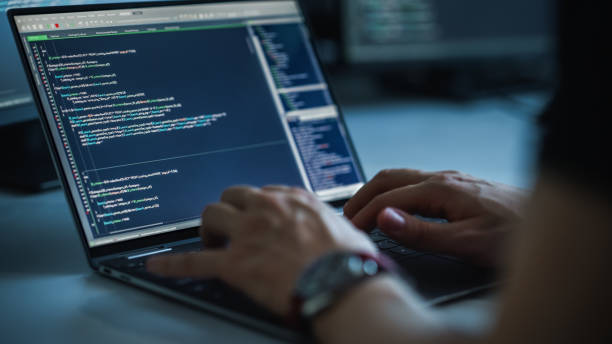Introduction
In the world of digital electronics, two fundamental building blocks play a crucial role in transforming and processing binary data – Encoders and Decoders. These components are essential in various applications, from data transmission to control systems. In this comprehensive guide, we will demystify the concept of decoders, their operation, and their significance in the realm of digital electronics. We will also touch upon their counterpart, encoders, to provide a well-rounded understanding of these crucial components.
Before delving into the world of decoders, let’s briefly explore the concept of an encoder in digital electronics.
Encoder in Digital Electronics
Encoders are digital circuits that perform a fundamental task – encoding data. In essence, they transform a set of inputs into a single binary code. These inputs can be in the form of switches, sensors, or any other binary information source. An encoder’s primary function is to convert these inputs into a binary representation, which simplifies data processing and transmission.
Decoder in Digital Electronics
Decoder in Digital Electronics, in the context of digital electronics, is the counterpart of an encoder. While an encoder encodes data from multiple inputs into a single binary output, a decoder performs the opposite operation. It takes a binary input and decodes it into one of several possible outputs.
Think of a Decoder in Digital Electronics as a key that unlocks multiple doors. Each unique binary input corresponds to one door, and the decoder’s task is to figure out which door to open based on the key (input) it receives.
How Do Decoders Work?
Decoder in Digital Electronics operate by examining the binary input and enabling one of the many output lines, ensuring that only one output is active at a time. This binary-to-decimal (or binary-to-other-base) conversion allows decoders to address various devices or functions within a digital system.
There are various types of decoders, and each has a unique way of functioning. Some common decoder types include binary decoders, BCD decoders, and priority encoders.
1. Binary Decoders: Binary decoders, often referred to as 2^n decoders, are among the most basic types. They have n input lines and 2^n output lines, where n is the number of inputs. Binary decoders are commonly used for address decoding in memory and I/O interfacing in microcontrollers and microprocessors.
2. BCD Decoders: Binary-Coded Decimal (BCD) decoders, as the name suggests, are used to decode BCD inputs into decimal outputs. These are essential in applications where decimal data representation is crucial, like in digital display systems.
3. Priority Encoders: Priority encoders are designed to prioritize input lines based on their significance. They ensure that the most significant bit is always decoded first. Priority encoders are vital in applications where certain inputs should take precedence over others, such as interrupt handling in microcontrollers.
Applications of Decoders
Now that we understand how decoders work let’s delve into their real-world applications.
Application 1: Memory Address Decoding
One of the most common applications of decoders is in memory address decoding. In a computer system, memory is organized into multiple blocks, and each block has a unique address. Decoders are used to select the appropriate memory block based on the binary address input.
Imagine a computer with 64K (kilobytes) of memory. This means there are 64 x 1024 memory locations. To access a specific memory location, you need a unique binary address, and a decoder helps in selecting the desired memory location by decoding this address.
Application 2: Multiplexing and Demultiplexing
Decoders are also used in multiplexers and demultiplexers. Multiplexers combine multiple inputs into a single output, while demultiplexers do the opposite – they take a single input and distribute it to one of many outputs. Decoders play a crucial role in demultiplexing, where they decode the input to select the appropriate output.
For example, in telecommunications, data from multiple sources can be multiplexed onto a single channel for transmission. At the receiving end, a demultiplexer uses a decoder to select the source data and route it to the correct destination.
Application 3: Display Systems
Digital display systems, like seven-segment displays, use BCD decoders to convert binary inputs into a format that can be displayed as numbers or characters. Each binary input corresponds to a specific segment of the display, allowing for the representation of numbers and characters.
For instance, in a digital clock, a BCD decoder takes binary inputs corresponding to the hour, minute, and second, and converts them into the appropriate segments to display the time.
Application 4: Error Detection and Correction
In error detection and correction systems, decoders are used to identify and correct errors in transmitted data. When data is transmitted over a noisy channel, errors can occur. Decoders can be designed to detect these errors and, in some cases, correct them by retransmitting the data or using error-correcting codes.
Encoder in Digital Electronics: Encoders are digital circuits that perform a fundamental task – encoding data.
Encoder in Digital Electronics: Encoders are widely used in applications such as digital communication systems.
Decoder in Digital Electronics: Think of a decoder as a key that unlocks multiple doors.
Binary Decoders: Binary decoders, often referred to as 2^n decoders, are among the most basic types.
BCD Decoders: Binary-Coded Decimal (BCD) decoders, as the name suggests, are used to decode BCD inputs into decimal outputs.
Priority Encoders: Priority encoders are vital in applications where certain inputs should take precedence over others, such as interrupt handling in microcontrollers.
Application 1: Memory Address Decoding: Decoders are used to select the appropriate memory block based on the binary address input.
Application 2: Multiplexing and Demultiplexing: Decoders play a crucial role in demultiplexing, where they decode the input to select the appropriate output.
Application 4: Error Detection and Correction: In error detection and correction systems, decoders are used to identify and correct errors in transmitted data.
Conclusion
In the world of digital electronics, decoders are unsung heroes that play a crucial role in routing data, controlling systems, and simplifying complex operations. They work hand in hand with their counterparts, encoders, to ensure the efficient processing and management of binary information.
Decoders are employed in a wide range of applications, from memory address decoding in computers to digital display systems, error correction, and addressable logic devices. Understanding how these components work and their applications is essential for anyone involved in digital electronics, from hobbyists to professionals.




